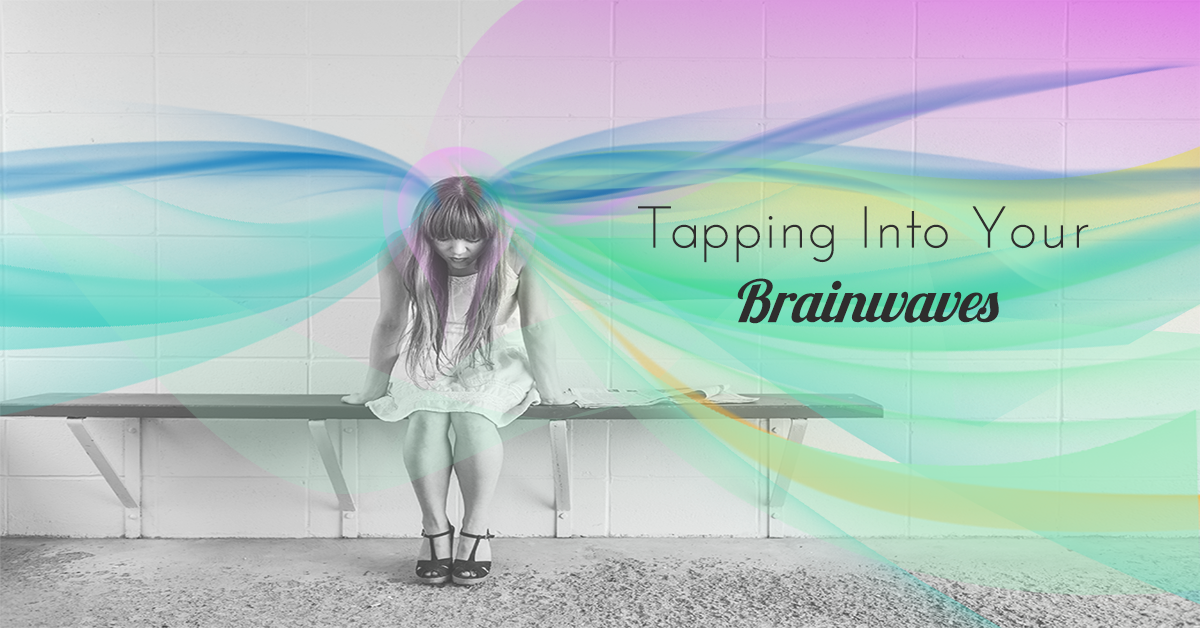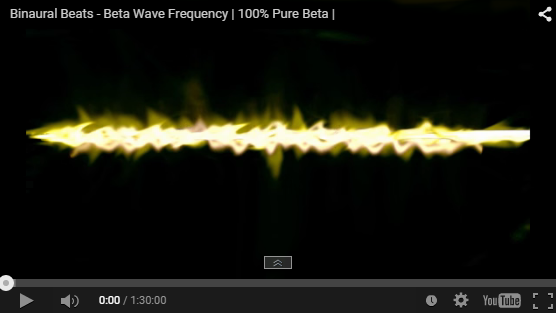Tapping into Your Brainwaves
An introduction into Brainwave Entertainment, and how we can all benefit from tapping into our own brainwaves.

Have you ever made yourself a killer, workout playlist that gets you pumped for your session each and every time? Or maybe you have a go-to soundtrack that you always listen to before you sleep? If you have done either of these things, then it already seems like you’ve tapped into the incredible potential of sound!
Most of us already know that certain music can help influence our mindset at any given time. Think along the lines of Mozart for studying versus Rage Against The Machine for political activism. (I don’t know about you, but I’d love to see a political protest off-set against the calming tones of Antonio Vivaldi’s, The Four Seasons.) But if you delve a little deeper and actually try to understand why certain sounds affect us in different ways, then a whole world of opportunity can await you. In fact, by understanding how music and sound can change our brainwaves, we can harness this knowledge to alter our mindset, improve our mental functioning and even develop our own collective consciousness!
While many of us simply focus on our emotions as a guide to how we feel and how we can make ourselves feel better, what goes on behind the scenes -our brainwaves and subconscious mind- often goes ignored, even though they also play an intrinsic part in our own quest to better ourselves.
In fact, by not being consciously aware of this untouched aspect of our own mindset, we are actively (albeit unknowingly) neglecting this very quest we are all set on. By learning about the deeper states of our own consciousness, how we truly work and what makes us really tick, we can finally open up our subconscious mind and create the reality we wish to see at will. You see, what we perceive as reality is not really our outside influences, but our own thoughts, beliefs and mindset. If we can harness these factors, then the world’s our oyster!
So, what skills do you need to create your own reality?
Firstly, you need to understand the different brainwaves and their functions; all 5 of them to be precise. Let me introduce to you Gamma, Beta, Alpha, Theta and Delta!
What is a brainwave anyway?
Before I bombard you with the different brainwaves and their functions, let me first tell you what a brainwave actually is (and as simply as possible)! First of all, it is important to note that there are actually 5 different brainwave frequencies (Beta, Alpha, Theta, Delta and Gamma), and each frequency is measured in cycles per second (Hz). These different brain waves are produced when neurons (brain cells) communicate with each other, sending enormous amounts of electrical activity all over your brain.
Each frequency has its own set of characteristics, which represents a particular level of brain activity as well the unique state of consciousness you are currently in. As a rule of thumb, the slower the frequency of your brainwaves, the more relaxed you may feel, and vice versa. For example, when you are in a deep sleep Delta waves (the slowest recorded brainwave) become the most dominant frequency, whereas Gamma waves (the highest frequency) come to the forefront during higher processing tasks. Various practices, such as meditation, hypnosis and guided imagery have been shown to help people tap into and control their brainwaves more efficiently. The more you become aware of their daily function in life, the more you can harness and control their potential. Cool, huh!
Gamma (40Hz +) – The Insight Wave
This interesting frequency has only just started to really reveal its secrets. While little is currently known about the Gamma wave – it has only recently been discovered- initial research seems to suggest that it may be involved with our own sense of conscious awareness, information processing and sense of perception.
Beta (13-30Hz) – The Waking Consciousness Wave
Are you focused on reading this article right now? Well then your Beta waves are in full flow. Beta brainwaves are high frequency brainwaves associated with our normal, waking consciousness, commonly observed throughout the waking day. Beta waves are involved in logical thinking, conscious thought as well as alertness and concentration. This is the go-to wave for stimulation.
But while Beta waves are critical for our everyday functioning, they also have a tendency to translate into bouts of anxiety, stress and restlessness. Indeed, they are also associated with over-thinking and worry - your senses have been naturally aroused. Beta is definitely the frequency that coffee addicts run on!
Regardless of the negatives (the Beta wave has gained a bad reputation amongst meditation circles), the Beta state is the frequency that you and I run on most frequently. But it is through knowledge of its possible implications as well as its benefits that we can function in a more effective and positive way.
Turn to Beta waves when you need to focus, problem solve and heighten memory. But if it’s time for you to relax, then you need to shift into Alpha.
Alpha (7-13Hz) – The Deeply Mindful and Intuitive Wave
The Alpha wave is that beautiful state which has you drifting between your conscious state and into your subconscious mind. Present during deep relaxation, and usually when our eyes are closed, the Alpha state is the optimal time to heighten your sense of creativity, imagination, visualisation as well as concentration. The Alpha wave is that detached awareness associated with daydreaming, too, but also shines brightest during light meditation. The real joy of your Alpha wave is its connection to your own subconscious, though. The Alpha wave is your own intuition coming to the forefront of your reality, wave by wave.
Be aware though, if we become stressed a phenomenon known as “alpha blocking” may occur, which involves excessive Beta wave activity, essentially dampening and stopping Alpha wave production.
Call upon the soothing waves of Alpha when you need to wind down and relax, but avoid if concentration and daydreams are not on the agenda.
Theta (4-8Hz) – The Meditation and Cat-Nap Wave
Often associated with peak spiritual experiences and a higher state of consciousness, Theta waves are connected to us during our most raw states of profound feelings and emotions, and are also present during deep meditation and light sleep. This is the moment where you can be privy to the deepest depths of your subconscious, albeit only momentarily.
It is said that some of our most deep-seated programs run upon a Theta level, and that we can often unlock the reasons behind our sense of deep spiritual connections and unity at this level, too. The universe is Theta and can be experienced in its majesty here. At a Theta level all your senses become magnified; vivid visualisations can occur, profound creativity abounds and our insight becomes heightened.
At the higher levels of Theta, from 7Hz to 8Hz, optimal conditions occur. At this level, we truly can start creating our own conscious reality. While your body is in ultimate relaxation, your mind is vibrantly aware and ready to create.
While Theta wave sounds like the ultimate journey for many, too much Theta activity can also cause bouts of depression and can also leave some highly susceptible to others and their emotions due to the hypnotic state some are left in.
Raise your frequency to that of Theta if you long for a profound sense conscious reality and creativity, however beware of this level if you can be prone to depression, impulsivity and anxiety.
Delta (0-4Hz) – The Deep Sleep Wave
Associated with that deep, dreamless sleep, the deeper the sleep you’re in - the higher your Delta waves. This is the slowest recorded wave in human beings. In the sense of Carl Jung’s “collective unconscious”, many believe that Delta is the key.
Interestingly, our ability to tap into the Delta state seems to decrease with age, with younger infants producing more Delta waves on average than adults. But that does not mean the Delta state by our own conscious means is unobtainable however – just tremendously difficult for most. Some believe that the state of Samadhi, the deepest state of meditation, is in fact a conscious state of Delta.
While it can be difficult to purposefully enter the Delta state, your body will naturally turn to it in times of restoration and natural healing, and of course, deep sleep.
Submit A Comment
Create a Psychic Sofa account today!
Join the Psychic Sofa Community Today and get access to:
- Get notified by (FREE) SMS text when a reader becomes available!
- Latest offers and members only exclusives
- Add favourite readers to your profile






Comments
No comments have been made yet